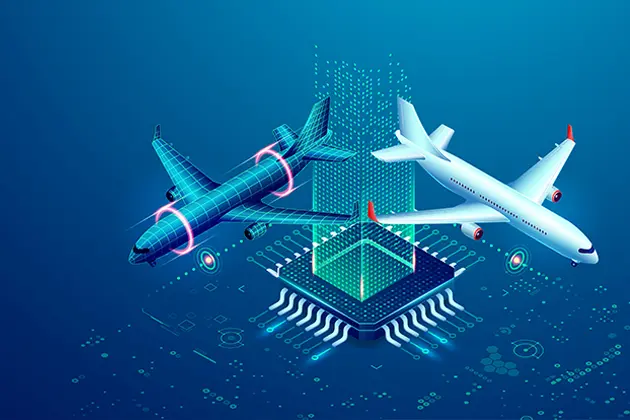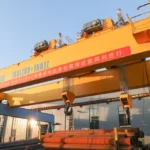The manufacturing industry is undergoing a significant transformation driven by rapid advancements in technology. To remain competitive, businesses are turning to technology to streamline operations, reduce costs, and boost productivity. Whether you’re managing a small factory or overseeing large-scale operations, embracing these innovations is key to staying ahead.
Here’s how technology is revolutionizing manufacturing operations and driving greater efficiency.
Automation: Streamlining Production Processes
Automation is at the core of modern manufacturing. By automating repetitive, labor-intensive tasks, you can drastically reduce the time and effort needed to produce goods. Robotics and automated machinery now handle assembly, packaging, and quality control, freeing your workforce to focus on more complex and strategic tasks.
Beyond speed, automation ensures precision, reducing human error and maintaining consistent product quality. This results in fewer defects, less waste, and higher customer satisfaction. Plus, with automation running 24/7, you can increase production capacity without adding shifts.
AI and Machine Learning: Driving Smart Manufacturing
Artificial intelligence (AI) and machine learning are transforming manufacturing operations by making them smarter and more efficient.
For example, machine learning algorithms can significantly enhance quality control in processes like plastic extrusion profile manufacturing. These algorithms improve precision by analyzing real-time data, detecting anomalies, and making automated adjustments to maintain consistent quality. This ensures that the final plastic profiles meet customer expectations and stringent standards.
IoT: Enhancing Connectivity and Data Collection
The Internet of Things (IoT) is transforming manufacturing by connecting devices and machinery to the internet, enabling real-time communication and data sharing. Integrating IoT into your operations provides valuable data that supports process optimization and production tracking across every aspect of manufacturing.
For example, IoT can streamline inventory management by providing real-time updates on stock levels and automatically triggering reorders when supplies run low. Additionally, it allows you to monitor energy usage and adjust the production process to conserve resources. With IoT, you can make data-driven decisions that lead to improved productivity and waste reduction.
Predictive Maintenance: Minimizing Downtime and Costs
Unexpected equipment failures can be a major setback in manufacturing. However, predictive maintenance technology helps you avoid these issues by analyzing data from sensors to identify patterns and predict when equipment is likely to fail.
This enables you to schedule equipment maintenance at the optimal time, preventing breakdowns and minimizing downtime. As a result, you save on repair costs and keep your production line running smoothly. Predictive maintenance also extends machinery lifespan, reducing the need for costly replacements.
Digital Twins: Enhancing Product Development and Testing
Digital twin technology is gaining traction in manufacturing. A digital twin is a virtual replica of physical products, processes, or systems. Using digital twins, you can simulate and test scenarios without the risks or costs of physical testing.
This technology helps identify potential issues, optimize designs, and refine processes before production. It also enables real-time monitoring throughout a product’s lifecycle, offering insights for continuous improvement. With digital twins, you can reduce development time, lower costs, and achieve outcomes of higher quality.
Cloud Computing: Facilitating Collaboration and Flexibility
Cloud computing is another technology that’s transforming manufacturing operations. Moving your data and applications to the cloud gives you greater flexibility, scalability, and collaboration capabilities. Cloud-based solutions allow your team to access important information from anywhere, at any time, making it easier to coordinate and manage operations.
Cloud computing also enables you to scale your operations up or down based on demand, without the need for significant investments in IT infrastructure. Additionally, cloud-based platforms often come with built-in security features, ensuring your data is protected.
3D Printing: Revolutionizing Manufacturing Processes
3D printing, also known as additive manufacturing, is revolutionizing the way products are designed and produced. This technology allows you to create complex, customized parts and prototypes quickly and cost-effectively. With 3D printing, you can reduce the time it takes to bring a product to market, lower production costs, and minimize waste.
For example, 3D printing enables rapid prototyping, allowing you to test and refine designs in a fraction of the time it would take with traditional manufacturing methods. It also allows for greater customization, as you can produce parts tailored to specific customer needs without the need for expensive tooling.
Final Thoughts
Technology is reshaping the manufacturing industry, driving efficiency through innovations like automation, AI, IoT, and 3D printing. These advancements streamline operations, reduce costs, and improve product quality. However, as you integrate these technologies, don’t overlook cybersecurity. Safeguarding your systems ensures you can maximize the benefits of these innovations without risking disruption.
The future of manufacturing is here—are you ready to take full advantage of it?











